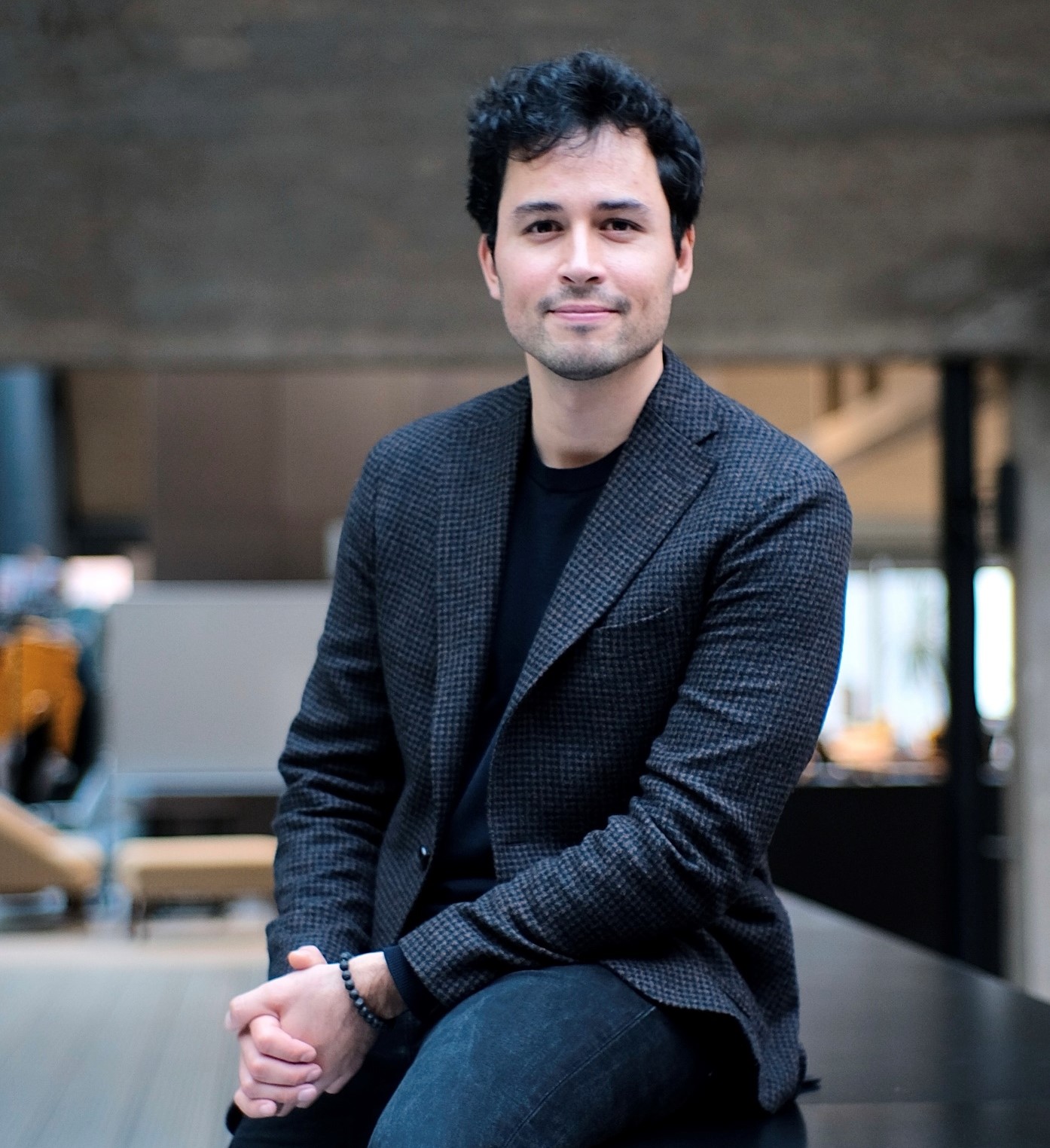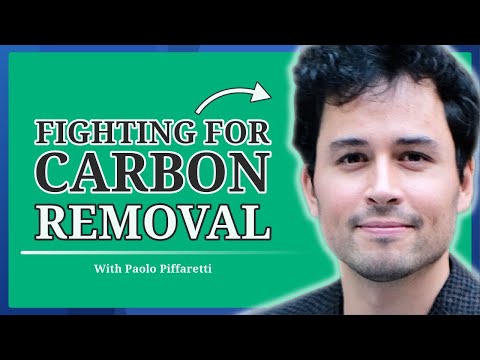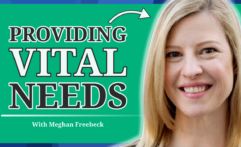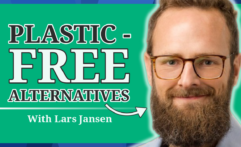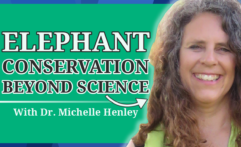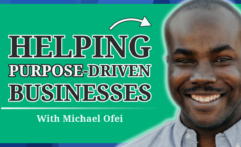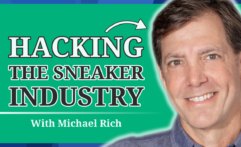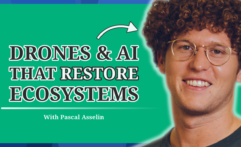Dennis: Hello, and welcome to the Impactful Ninja Show. I’m your host, Dennis Kamprad. And today, we’re joined by Paolo Piffaretti from CarbonX. Paolo, welcome.
Paolo: Hi, Dennis. Thank you very much for having me.
Dennis: My pleasure. Now before we go in in telling you your journey, give us a brief overview of what is CarbonX and what are you doing there?
Paolo: Absolutely. So CarbonX is a market intelligence carbon procurement platform. Our aim is to de risk the procurement of permanent carbon removal technologies vital to reach the next year targets that companies set for themselves.
Dennis: Wow. Super concrete. And probably for a lot of you, it’s like, oh, so many buzzwords. Can we unpack that a little bit? Or what would that concretely mean?
Paolo: So basically, since the Paris Accord, we’ve set a goal for ourselves to become net 0 by 2050, and that is to avoid the worst effects of climate change. That means that we need to massively reduce our emissions, approximately 80 to 90% of it. And for the hard to abate residual emissions that we cannot reduce because we’ll still need to travel, we’ll still need to produce certain things. We need to think about ways to remove their emissions permanently to reach this net zero. And basically, companies are asked to say, they’re asked to reduce their carbon footprint, but also look at ways to then remove permanently these residual emissions. Now, the technologies that are responsible for this removal are completely new. They’re hard to navigate, and we are here to help companies navigate this nascent market to help them best allocate their resources, to really promote the technologies that really have a chance to scale to climate relevance and remove the much needed excess carbon we have in the industry.
Dennis: So basically, you’re helping organizations to remove all those carbon emissions that they cannot reduce anymore and you’re doing it in a kind of a marketplace way where you’re only offer those emissions that can be captured, like, directly?
Paolo: I would say more than a marketplace, we really do it. We’re a portfolio manager. We allow companies to build portfolios. This is not a typical market where you have off the shelf credits running around. These are technologies that are being built as we speak. And typically it’s an industry that operates in the future where they will sell you their future emission of carbon removal credits. And so what we do is that we help companies secure these future emissions of carbon removal credits and manage the underlying risks. And there’s mainly 2 risks.
Paolo: There’s an integrity risk. So looking at how we know whether or not the carbon is indeed permanently removed and if it’s additional, net negative, verifiable. And there’s this also second risk, which is a financial risk. Making sure that if we do buy credits in the future, they do actually materialize into actual negative emissions. And we’re not just buying hot air. So we really operate as a portfolio manager to help organizations build up their portfolio and and make sure that they get what they sign up for.
Dennis: Beautiful. I think now we got the perfect context. I’m super curious about diving a little bit deeper into that as well, but let’s rewind the story a little bit and focus on what what did you do before founding CarbonX? What is your background?
Paolo: Absolutely. So prior founding CarbonX, I was head net zero of a big tech company operating out of San Francisco. I myself was in the the Persian team and was very much responsible for setting up their whole material strategy. So looking at how to reduce our carbon footprint. And first of all, I should say how to scope it, which is a, you know, a task in itself, reduce it, and eventually looking at how to maximize our climate contribution and remove these residual emissions. And it’s truly in the exercise party actors or stakeholders that could provide me the guarantees needed to justify such spending or such involvement from my board to my c levels. I couldn’t find any. That’s why I decided to kinda go into CarbonMax.
Dennis: So basically, you in your day job, you found something that you needed to solve, but there was not a solution. You had a problem you needed to solve. The solution wasn’t out there. And with Carmex, you’re building the solution. Let’s take one tiny step back before we go into this. So you mentioned that you already worked in a big tech company on that issue. Yeah. Can you remember, like, how your first interest came apart? Was that, like, by chance, or was that something you specifically applied for to to get started there?
Paolo: I think it really came from the realization that we as a company were doing extremely well, especially during COVID where a lot of the businesses needed to digitalize. So we were one of the winners, I would say. And so we were doing very well. And I felt like somehow we needed to leverage this position we’re into then do good, more good than we could. And I felt like we were a tool that, you know, allowed companies to optimize their conversion rates. And the bottom line is is either sell more products or allow for people to consume more content. And so to a certain degree, I kind of felt responsible as well for the fact that, hey, we were either directly or indirectly contributing to this overconsumption, which then ties back to global change or climate change and global warming. And so I felt like, okay, we’re in this privileged position.
Paolo: We are somewhat responsible for the situation we’re in. What can we do about it? And, it was really a personal call.
Dennis: Beautiful. And then let’s go back to to where we we ended beforehand. So you mentioned that you were searching for a solution that wasn’t there on the marketplace. What was your concrete next steps? Did you directly jump into CarMax? Did you try to solve it internally with your company? And how did that go ahead?
Paolo: What happened is, basically, I started building up internal knowledge. And I think what happened is I came in into this market in a very naive manner. I was expecting things to be very clear. This is a good solution. This is a bad solution. And its stakeholders to also provide me with this kind of information. And unfortunately, that was absolutely not the case. And so before kick starting CarbonX, what I did is just I really spent a lot of time digging deep into the science, into the, you know, market knowledge, try to get as much information as I could to get to this very contrasted picture where I could very simply say, this is good, this is math.
Paolo: You know, and I think when you get to that level where you start to have a clear understanding of, you know, how things should work and how they shouldn’t, this was I think the most basic step then thinking about, okay, do I need to do this? I’m not a larger scale. Is this much needed? And as I got to more knowledge and I started interacting with more stakeholders in the ecosystem, that’s where I saw where this was a really recurring issue that a lot of people were struggling with this opacity around this market. The fact that there weren’t any regulatory framework then. It was nascent industry. So there were only a few, a handful of players and even, you know, the world organization or international organization, or even, you know, entities such as, you know, the European Commission was not providing any guidelines on that specific topic. And so that’s when I felt like, okay, maybe then it’s worth with all the knowledge that I’ve accumulated, you know, seeing whether or not other people would be interested in that.
Dennis: So here are, like, 3 really interesting topics out there. 1, kind of being naive enough to get started. The second thing, from the outsider perspective, thinking about what should be in place and even the most basic things, realizing that they’re not in place. And the third one is in also reaching out and speaking to other organizations and figuring out if they have the same issue or the same problems that you have.
Paolo: Absolutely. No. It’s exactly that.
Dennis: What was your next concrete step? Did you try to build it up internally first or did you directly, at this point said, like, with all the knowledge and with all the research that you’ve done, let’s go full board on that?
Paolo: What I realized is I needed to spun out of of my organization because this was a job that, you know, dedicated my full attention and full time. And for me to do it properly, I felt like, okay, I needed to give my undivided attention, I should say. So the first thing is I need was was to then start thinking about, okay, standing up or moving away from organizations so that this becomes my main focus. Because otherwise, there’s always conflicting opportunities. You know, you’re you’re always gonna be asked to do something else. And when the matter at hand is that important, I think it requires your undivided attention. And the second thing, then the second step that was vital was finding the right person to do it with. And in my case, what I realized is there was a really need for someone to help me analyze, deep dive into each of those businesses, each of those technologies, someone that had a keen expertise in delving deep into projects that are in the becoming.
Paolo: And so, yeah, finding the right person was really the second step that was essential.
Dennis: Give us an overview from the timeline. What would you say, like, firstly, when most likely when you took the decision, found the right person, and how much time has passed since you kind of made the decision internally and kind of affecting the team.
Paolo: Absolutely. So I think it took me 3 to 4 months to get a good understanding of the problematic, starting to kind of map out the ecosystem, understanding what were the underlying trends and actually provide like build up a case that’s, you know, would allow me to convince someone that is also and typically I was looking for someone that was very experienced, very sought out. So you need to make sure that you’re on solid grounds before proposing anything to anyone, especially if that person is an expert. And so really it’s that, yeah, I would say 3 to 4 months really working hard in providing the structure of this initial framework. And then it took us, yeah, I would say from the moment I first fetched the idea to this, to my now co founder to then him and me starting this whole time, it took us, Yeah. I would say 6 months.
Dennis: Oh, wow. So kind of like 3, 4 months to to figure everything out, pitching the idea. 6 months later, let’s say 9, 10 months afterwards, and you’re kind of ready to get started. When was that roughly?
Paolo: That was in May 2022 is really when we really officially kicked it out.
Dennis: Okay. So a bit more than one and a half years ago. Absolutely. How did you then get started? So you have a co founder. You have the research. You’re already on fire to get going. What was the concrete first steps for you?
Paolo: Well, basically, I made a list of things that I needed. There were 3 things I needed to be. I needed to be an expert and a recognized one within this industry. And that was checked because I was head NCO of this big tech company. So I really had no responsibilities. I understood what was required from the corporate side and gave me legitimacy to reach out to other companies and tell them about these issues. And then second was also getting funding. So from the moment we started working together, we already started engaging in, in with other potential VCs and investors in helping us, you know, raise some funds for us to hit the ground running.
Paolo: And the third step was getting our case proven. So we really did a successful case study. And so really finding a first real big client to prove that indeed there is a need for that.
Dennis: So basically, you had to work on on 3 sites similar to make it happen and then provide the case then. So once well, the carbon offsets is one big part. The organizations who could be partnering, who could be interested in it, and at the same time also get the funding, putting all of these things together, provide the first case study, and go ahead from there.
Paolo: Exactly.
Dennis: When it comes to these 2 sided or, in this case, even 3 sided markets, Normally, one of these is easier than than the others. Which one would you say was was easier for you to get? Which of these sites? Or what what was the biggest challenge and maybe convincing convincing someone?
Paolo: What was difficult is getting first buyers. I think since it was an Asian industry, a lot of people were asking us, so we’re you’re going to face a lot of issues with supply. So these actual companies that are doing carbon removal and what we found and what we saw was that actually given the, the necessities for it and the underlying trends, there was a growing number of it. What was really harder to find were companies and stakeholders willing to buy a hefty price to finance these solutions. Especially that since now we’re in the early days, we haven’t reached yet the economies of scale that make them a bearable for most companies. These are very expensive solutions. And so finding companies that are leading to spearhead this debate and, and to be the kind of the first testers of of these solutions and be willing also to take on a bit of risk because indeed, I mean, these are technologies that are being built. The measurements, reporting, and verification standards there, they were also being developed.
Paolo: Everything is being built as we speak. So companies, first they needed to finding companies that, that were willing to spend that much money without all the guarantees, etcetera. It was is and was a hard, a hard task.
Dennis: Was it a communication challenge for you as well? Because it sounded like one of the key points for you was also the management for these companies. At the same time, that’s one of the key points to basically convince them of as well.
Paolo: Yep. And the way we do this still today is just by providing this much needed transparency. And we try from the very first interactions to bring this visibility. We try to be as transparent as we can in the ways of, you know, how we assess this project, where do we think the risks are, and we’ve developed a whole framework around that. But also providing clear visibility on specific market data, such as their price points, their availability, the volume effects, and, you know, benchmarking that across a specific renewal pathway so that companies then really get to see, okay, this is indeed potentially the DMBP, the most viable, you know, player and these others may be not the best way for it, etcetera. So really providing this prosperity
Dennis: is the same. Walk us away along this journey now from the starting point of the first case study, getting funding, getting the organizations on board on both sides, providing the offsets for carbon removal, getting the first clients along the journey, creating the transparency as one of the key points where you know and what else has happened along the way.
Paolo: So really what happened is we, Sebastien and I did, we launched Carbonitex. Our focus was then very rapidly on analyzing the market. So, so building up our expertise and our understanding of, you know, the CVR industry. And what I mean by CVR is carbon dioxide removal. That’s the, the acronym for this, for these technologies that remove carbon permanently. So really building up our database so that we could then go back to companies and organizations and suggest them what were the best technologies and underlying projects to move forward with. The journey very rapidly was on one end focusing on the CDR aspect of our organization and on the revenues. Really also in parallel talk to leading organizations and convincing them to start deploying a budget dedicated to fund these initiatives and building a case so so that we could rationalize it to their board levels, their C levels.
Dennis: Nice. Was there any challenges or any surprise along the way that even though you did all the research that you didn’t really expect?
Paolo: I think what was a bit surprising is even though I think this is an industry that is driven by people that want to do a lot of good, I think, unfortunately, there are always Business kind of gets in the way and sometimes greed as well. And so, what I was surprised was to see that unfortunately that not the best behavior was in that market and a lot of the fundamentals needed to run a successful market where it was sometimes lacking. And I thought that was a bit strange given the fact that this was an industry where we’re all working towards a common goal and us as buyers, we were doing our best to rationalize this and help these technologies get funded. But on the other hand, what I saw was the same trends, you know, I saw in the SaaS industry where sometimes people instead of thinking long term, they were more thinking about how to maximize their margins, how to maximize their gains, leverage information asymmetry, which, and yet I think impacted negatively, this market. And I think the reason why it takes a bit more time than expected to kick start this market in Mindanao really started to see a growing trend is in part due to the opacity of this market.
Dennis: And it also sounds like one of the big changes in the market when it comes to greenwashing where a lot of companies just say they want to make a difference. They show to the consumers and to all the world that they’re making a difference, but they might not be engaging and putting the dollars behind where the worthless and going for some solutions that might not be as effective as they proclaiming them.
Paolo: Absolutely.
Dennis: And it also sounds like the solution that you’re going for is one that kind of prevents that whole greenwashing pot.
Paolo: 100%. We at CarbonX, and we really are almost very, very few, and I think we can count it with one hand and I think with a couple of fingers, we focus strictly on permanent carbon rules because today science endorses only these technologies and especially when it comes to mitigating, you know, one’s emission, when a company emits a ton, that ton stays indefinitely in the atmosphere. So the only way to counterbalance it in a meaningful way is that your negative emission is as permanent as your original emission. And the point is, these technologies, they come at a, as I mentioned earlier, at a hefty price. And therefore, most reduction pathways are much cheaper than these technologies. So typically, when a company starts to consider sales to these technologies, it typically has a really well explored all of the reduction possibilities because everything else is much cheaper than these technologies at this current stage. So that’s why we would say that this is the first market mechanism that allows companies to fully appreciate the cost of emissions. Because when you’re asking a company to pay upwards, you know, 450 to $500 a ton, Knowing they have 1,000 if not millions of ton to remove.
Paolo: And of course, they’ll make sure that they’ve maximized the rejection before even spending that kind of money. Yeah.
Dennis: That’s also one of the things that we’ve seen. We’ve done a lot of research in reducing carbon emissions with different kinds of carbon offsets from the super permanent ones to not so much. And there’s some key criteria like how permanent is it. And there’s a vast difference between just sucking it out of the air, storing it permanently. How immediate is it, and what kind of other factors are there. Like, is it actually additional or what that have happened anyway? And when you put all of these things together, there’s like a massive difference from just thinking about the Earth and the emissions. Do you suck it out? Is it right now? Is it happening only because you made that happen and it’s permanent? Or do you plant let’s just say for the for the sake of the exam since there were some issues around, do you plant some trees that would have been planted anyway that will be materializing maybe in 5 to 10 years in a maximum span and something could or could not happen? And the problem that we’ve seen with the market as well is that a ton versus a ton without any kind of differentiator. So there’s always like a lot of communication issues between why is this ton so different than the other ton.
Dennis: And I feel like there’s maybe some regulation or maybe some other frameworks that are still missing that need to be dominant.
Paolo: Exactly. And the good thing and the good news here is that as of a few months ago, there is now a framework and it’s in the final stages of being approved by the European Commission, and it’s called the Carbon Removal Certification Framework. So, the EU CRCF, that’s the acronym. And that means for the very first time to what you’re saying, we finally have a framework that defines what is an acceptable carbon removal credit. And it defines exactly what is permanence because a lot of the organization instead of we’re using the word permanent without defining what permanence is. We know what’s net well, what is also required in addition. So like, as you mentioned, additionality, the fact that it needs to be verifiable, it needs to be net negative. So for 1 ton removed, you shouldn’t emit 2 tons and, also limiting the reversal risk.
Paolo: What are the guarantees we have that once it is removed, it is not reemitted. And the great thing is that here, the European Union adopted a very conservative, somewhat narrow definition of what is acceptable. And though there is a high chance that they might broaden it a little bit, they really focus on these technologies where it is crystal clear that carbon has been removed permanently with no chances of being remittance. And they typically now only consider geological storage or mineralization. So here we’re looking at geological timescale. It’s not it’s carbon removed, not all over a couple years or centuries. We’re talking millennials. So so that’s that’s a great thing.
Dennis: Nice. I didn’t didn’t even know about it. I’ll need to have a look closer look into it. Super excited that something’s coming out on that end as well. Yes. Now have a look let’s have a look into the future as well before going into the next parts. How do you envision the journey with Carmex? What’s happening next for you guys?
Paolo: So right now, at CarbonX, we are really specializing in so we’re in these CDR technologies and building up these portfolios and making sure that they materialize over time because companies that sign up to these technologies or for these technologies, they typically sign multi year agreements. And what they typically do is that they build up their inventories of these, of such technologies. And so what we’re doing right now is really we’re completing and it’s a continuous effort our vision of the market. So we really are sourcing and evaluating and analyzing all the different projects that are popping up everywhere. We’re spending a huge amount of resources on that so that then we can then come back and help companies make informed decisions. Our mission at Carboniz is to really scale this industry to climate relevance. We want to reach that 10 gigaton goal. And for that, we need to make sure that then we identify which are the players that will help us get there.
Paolo: I mean, the CDR players and provide them with the advanced market commitments so that they can get the funding needed to scale their infrastructure, scale their businesses, and get to these gigatons. So that’s really what we’re we’re focusing on. CarbonX is really about anything that has to do with financing these technologies, be it on the procurement side. But eventually, we’ll also look at also the financing in itself.
Dennis: Beautiful. Now before we go into the learnings as well on for your personal life, how like, anyone listening to us now, how could we best engage with you? How could we support you? Or who would be a target group that you would be happy, to share more information with?
Paolo: I think for us, it’s if you’re part of an organization that has set a goal for itself to become or reach net 0 and you haven’t defined yet what your strategy is for carbon removal or to mitigate your residual emissions. And I think that’s a good time to then start to think about that. And, you know, we’re always open to discussing with the organization, helping them structure their procurement strategy to avoid customer mistakes. So a great thing would be to have people reach us out, based on, you know, their organization’s requirements, and we would be more than happy to help them, you know, navigate this very complex market.
Dennis: Nice. We’ll put all the links, down below and also in the show notes. Let’s make a transition to your personal life now. What would you say since basically starting with the previous tech company and now even even much more working on all the carbon removal parts with Carmix, how would you say has that impacted your personal life?
Paolo: It’s such a reward. And I have to say first, I have to thank my partner because she supports me a lot. It’s, when you kickstart a business, of course, there’s a lot of risks attached to that. And if you do not have someone that, you know, supports you, then it becomes a very daunting, difficult thing to do. But now it’s it’s the support. And then personally, it’s working for something that has a meaning for working on climate change, on mitigating that gives me so much purpose every day. It’s a fuel that never runs out. And it’s something I recommend to everyone.
Paolo: Work for something that has a meaning.
Dennis: Beautiful. Now, let’s go into the final question. If you had one tip to share with our audience how we could become more impactful, what would your number one tip be?
Paolo: Transparency. You know, we always need more transparency. If you can help the world by bringing more, like, data, valuable data, and if you can show it to the world openly, the better we are. Right now, unfortunately, a lot of the bad things that are happening to us is due to information asymmetry, to lack of data and to opacity. So I think a general thing is let’s all work towards transparency. Let’s make sure that everyone can do, you know, have access to to good information so we can make these informed decisions. That stuff matters.
Dennis: Awesome. Well, thanks. Thanks so much for sharing all that. And thanks so much for your work you’re doing with CarbonX, Paolo. It was a pleasure having you.
Paolo: Likewise. Thank you, Dennis.
Dennis: Awesome. And to everyone else, thanks so much for joining us as well and stay impactful.
![]()
